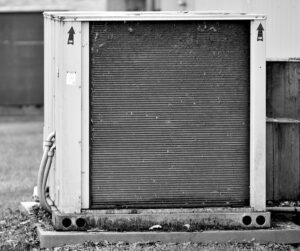When it comes to choosing a new air conditioner or understanding the performance of your current system, one important factor you should consider is the SEER rating. SEER, which stands for Seasonal Energy Efficiency Ratio, plays a significant role in determining your air conditioning system’s efficiency, operating costs, and overall performance. In this article, we’ll break down what SEER ratings are, how they affect your air conditioning system, and how you can make the most of your system with the help of Frost & Kretsch Heating & Cooling.
What is a SEER Rating?
The SEER rating measures the cooling efficiency of an air conditioning system over an entire cooling season, which typically lasts for several months. This ratio is calculated by dividing the total cooling output (measured in BTUs) by the total energy consumed (measured in watt-hours) over the course of a season. The higher the SEER rating, the more energy-efficient the air conditioner is. This means that an air conditioner with a higher SEER will cool your home using less energy, saving you money on your utility bills.
How Does SEER Impact Your Energy Costs?
When you’re shopping for a new air conditioner, you’ll often see SEER ratings ranging from 13 to 25, depending on the unit. The U.S. Department of Energy sets the minimum SEER rating for new air conditioners at 13, although many models exceed that minimum.
- Higher SEER Rating = Greater Efficiency: A higher SEER rating means that your AC uses less energy to cool the same amount of space, reducing your energy bills. For example, an AC unit with a SEER of 20 will consume about 40% less energy than one with a SEER of 14.
- Lower SEER Rating = Higher Energy Consumption: On the other hand, if you choose an air conditioner with a lower SEER rating, your system will consume more energy to perform the same task, leading to higher electricity costs.
Why Should You Choose a High SEER Rating?
While air conditioners with higher SEER ratings may have a higher upfront cost, they offer long-term savings by reducing your energy bills. Over time, the energy savings can offset the initial investment, especially if you live in a warm climate where your air conditioning system is used frequently.
How SEER Affects the Environment
A more energy-efficient air conditioner is not only better for your wallet—it’s also better for the environment. Air conditioners with higher SEER ratings use less electricity, which in turn reduces your carbon footprint. By opting for an efficient system, you are contributing to energy conservation and helping to minimize the environmental impact of your cooling needs.
What’s the Right SEER Rating for Your Home?
When selecting an air conditioner, consider your local climate and how often you’ll use the system. If you live in an area with extreme heat or use your AC frequently, investing in a higher SEER model will save you more money in the long run. However, for those in milder climates or who don’t use their air conditioning much, a model with a SEER closer to the minimum may be a good choice.
Contact Frost & Kretsch Heating & Cooling for Expert Advice
Choosing the right air conditioning system for your home requires understanding your cooling needs and the efficiency of different models. If you’re unsure which SEER rating is best for you, the experts at Frost & Kretsch Heating & Cooling are here to help. We can guide you through the process of selecting an energy-efficient system that meets your needs while staying within your budget.
For more information or to schedule an appointment, visit our website at https://michiganheatingcooling.com/ or give us a call at (586) 929-8980. We’re located at 47212 Jefferson Ave., New Baltimore, MI 48047, and we proudly serve homeowners in the surrounding areas.
Frost & Kretsch Heating & Cooling
